The Well-Tempered Ear
Classical music: A public memorial for critic John W. Barker is this Sunday afternoon. You can also help honor him with a named chair at the UW-Madison’s new Hamel Music Center
1 Comment
PLEASE HELP THE EAR. IF YOU LIKE A CERTAIN BLOG POST, SPREAD THE WORD. FORWARD A LINK TO IT OR, SHARE IT or TAG IT (not just “Like” it) ON FACEBOOK. Performers can use the extra exposure to draw potential audience members to an event. And you might even attract new readers and subscribers to the blog
By Jacob Stockinger
You might recall that John W. Barker (below, in a photo by Mark Golbach) — a retired UW-Madison professor of medieval history and a longtime, well respected music critic, lecturer and radio host for WORT — died at 86 on Oct. 24.
His wife Margaret writes:
Dear Friends,
There will be a gathering to remember John at Capitol Lakes Retirement Center, 333 West Main Street – downtown and two blocks off the Capitol Square — this Sunday afternoon, Dec. 15, at 3:30 p.m. Please join us for memories and music. And please pass the word.
Barker wrote frequently for this blog as well as for Isthmus, The Capital Times and the American Record Review. He had a long, full life with distinguished careers in both history and music.
For a complete obituary, go to: https://madison.com/news/local/obituaries/barker-john-walton/article_04261147-4317-5cf2-9b6a-4098f3ffca06.html
Barker has already been honored by a special performance for him and then by the current season being dedicated to him by Middleton Community Orchestra; and by the Madison Early Music Festival, in which he was very active for many years, naming its annual concert lecture series after him.
Another way to honor Barker is to contribute to a project that is headed by local businesspeople Orange and Dean Schroeder, who founded the annual Handel Aria Competition, of which Barker was a founding board member who also served as a judge. The Schroeders write:
“Members of the Madison musical community have decided to honor John W. Barker by dedicating a seat in his memory in the new Hamel Music Center at the UW-Madison. The cost is $1,500 of which $950 has already been raised. If you would like to join us, please click on this link and specify that you are making the gift in his memory: https://secure.supportuw.org/give/?id=515d53cf-e8ff-4caa-9260-c7885c66b309
John W. Barker sang in choirs and loved choral music, like the last movement, “In Paradise,” of the Requiem by Gabriel Faure that you can hear in the YouTube video at the bottom.
Thank you, John. Rest in peace.
Tags: #AmericanRecordReview, #BaroqueMusic, #BlogPost, #BlogPosting, #BoardMember, #CapitolLakesRetirementCenter, #CapitolSquare, #ChoralMusic, #DeanSchroeder, #FacebookPost, #FacebookPosting, #FaureRequiem, #Frenchcomposer, #FrenchMusic, #GabrielFaure, #GeorgeFridericHandel, #HamelMusicCenter, #HandelAriaCompetition, #IsthmusMagazine, #IsthmusNewspaper, #JohnW.Barker, #MadisonEarlyMusicFestival, #MarkGolbach, #MeadWitterSchoolofMusic, #MedievalHistory, #MiddletonCommunityOrchestra, #MusicCritic, #OrangeSchroeder, #RadioHost, #TheCapitalTimes, #UniversityofWisconsin-Madison, #VocalMusic, #WORT-FM89.9, #YouTubevideo, American Record Review, annual, aria, Arts, Baroque, Baroque music, blog, board, board member, broadcaster, Business, businesspeople, Capitol Lakes Retirement Center, Capitol Square, career, choral music, Classical music, Competition, composer, Concert, contribute, cost, critic, Dean Schroeder, death, dedicate, die, distinguished, Early music, Facebook, faculty, fathering, Faure, Faure Requiem, forward, France, French, French music, full, George Frideric Handel, gift, Hamel Music Center, Handel, Handel Aria Competition, History, honor, host, Isthmus, Jacob Stockinger, John W. Barker, judge, lecture, lecturer, life, like, link, local, long, Madison, Madison Early Music Festival, Mark Golbach, Mead Witter School of Music, Medieval history, MEMF, memorial, memories, memory, Middleton Community Orchestra, Music, music critic, name, naming, obituary, Orange Schroeder, Paradise, People, performance, post, posting, professor, project, public, Radio, remember, respect, retired, Retirement, seat, series, share, special, tag, The Capital Times, United States, University of Wisconsin-Madison School of Music, University of Wisconsin–Madison, UW-Madison, vocal music, wife, WORT-FM 89.9, Writer, years, YouTube
Classical music: The Middleton Community Orchestra and conductor Kyle Knox brightened a soggy spring with early Beethoven and Elgar. On Tuesday night, an organ and cello concert takes place in Overture Hall.
2 Comments
IF YOU LIKE A CERTAIN BLOG POST, PLEASE SPREAD THE WORD. FORWARD A LINK TO IT OR, SHARE or TAG IT (not just “Like” it) ON FACEBOOK. Performers can use the extra exposure to draw potential audience members to an event.
ALERT: On this Tuesday night, April 16, at 7:30 p.m. in Overture Hall, organist Greg Zelek and guest cellist Thomas Mesa will close out the season of Concert Organ performances sponsored by the Madison Symphony Orchestra. The program includes music by Johann Sebastian Bach, Franz Joseph Haydn, Ludwig van Beethoven, Franz Schubert, Peter Ilyich Tchaikovsky, Claude Debussy and Charles-Marie Widor. For tickets ($20) and more information about the program with detailed biographies of the performers, go to: https://madisonsymphony.org/event/thoms-mesa-greg-zelek/
By Jacob Stockinger
Here is a special posting, a review written by frequent guest critic and writer for this blog, John W. Barker. Barker (below) is an emeritus professor of Medieval history at the University of Wisconsin-Madison. He also is a veteran and well-known classical music critic who writes for Isthmus and the American Record Guide, and who hosts an early music show once a month on Sunday morning on WORT FM 89.9 FM. For years, he served on the Board of Advisors for the Madison Early Music Festival and frequently gives pre-concert lectures in Madison.
By John W. Barker
The early spring concert on last Wednesday night by the Middleton Community Orchestra (below, in a photo by Brian Ruppert) at the Middleton Performing Arts Center that is attached to Middleton High School was comparatively short – it had no intermission — and was devoted to only two composers.
The first was Edward Elgar (below, in 1910), whose early orchestral works included a good deal of music drawn from his youthful sketchbooks. Notable in that category were two suites, given the joint title of The Wand of Youth.
From the eight sections of the First Suite (1907), six were played, and from the six sections comprising the Second Suite (1908), four were given. All these movements are colorful and evocative little miniatures, reflecting early imagination, often touching, but many quite boisterous.
The other composer was Ludwig van Beethoven (below), as represented by his Symphony No. 2. This shows the young composer moving quite distinctly beyond the stylistic world of Haydn and Mozart into the rambunctious new symphonic idiom he would go on to create. (You can hear Leonard Bernstein and the Vienna Philharmonic play the opening of Beethoven’s Symphony No. 2 in the YouTube video at the bottom.)
The guest conductor this time, Kyle Knox – the recent University of Wisconsin-Madison graduate who is the music director of Wisconsin Youth Symphony Orchestras and the associate conductor of the Madison Symphony Orchestra — chose to give the music a “big orchestra” approach.
For both the suites and the symphony, the lighter and cleaner textures of a chamber orchestra would seem best. But with an orchestra totaling some 91 players, Knox chose to go for volume and sonority.
His tempos, especially in the Beethoven were notably fast. As the largely amateur orchestra followed loyally, there was some raw playing at times.
Still, the MCO asserted strong character, which made a very happy impression on the audience and brightened an evening of soggy weather.
Tags: #AmateurMusician, #AmericanRecordGuide, #BaroqueMusic, #BeethovenSymphony, #BlogPost, #BlogPosting, #BrassSection, #CelloMusic, #ChamberMusic, #ChamberOrchestra, #Charles-MarieWidor, #ClaudeDebussy, #EdwardElgar, #EmeritusProfessor, #FacebookPost, #FacebookPosting, #FranzJosephHaydn, #FranzSchubert, #GregZelek, #IsthmusNewspaper, #JohannSebastianBach, #JohnW.Barker, #KyleKnox, #LeonardBernstein, #LudwigVanBeethoven, #MadisonEarlyMusicFestival, #MadisonSymphonyOrchestra, #MeadWitterSchoolofMusic, #MedievalHistory, #MiddletonCommunityOrchestra, #MiddletonHighSchool, #MiddletonPerformingArtsCenter, #MusicalStyle, #MusicCritic, #MusicReview, #OrganMusic, #OvertureCenter, #OvertureHall, #PercussionSection, #PeterIlyichTchaikovsky, #Pre-concertLecture, #SpringWeather, #StringMusic, #StringSection, #TheWandofYouth, #ThomasMesa, #UniversityofWisconsin-Madison, #ViennaAustria, #ViennaPhilharmonic, #WisconsinYouthSymphonyOrchestras, #WolfgangAmadeusMozart, #WoodwindSection, #WORT-FM89.9, #YouTubevideo, amateur, American Record Guide, April, Arts, audience, Austria, Bach, Baroque, Baroque music, Beethoven, big, biography, blog, boisterous, brass, category, cellist, Cello, Chamber music, chamber orchestra, character, Charles-Marie Widor, Classical music, Claude Debussy, clean, colorful, composer, Concert, concerto, conductor, critic, early, Early music, Edward Elgar, emeritus professor, evocative, Facebook, fast, forward, Franz Joseph Haydn, Franz Schubert, graduate, Greg Zelek, guest, happy', Haydn, idiom, imagination, impression, intermission, Isthmus, Jacob Stockinger, Johann Sebastian Bach, John W. Barker, joint, Kyle Knox, lecture, Leonard Bernstein, lighter, like, link, Ludwig van Beethoven, Madison, Madison Early Music Festival, Madison Symphony Orchestra, Mead Witter School of Music, Medieval history, Middleton Community Orchestra, Middleton High School, Middleton Performing Arts Center, miniature, movement, Mozart, Music, music critic, music review, night, opening, Orchestra, organ, organist, Overture Center, Overture Hall, percussion, performer, Peter Ilyich Tchaikovsky, players, professor, program, raw, recent, review, Season, Serenade, share, short, sketchbooks, soggy, sonority, sping, string section, strings, style, Suite, symphony, tag, Tempo, texture, The Wand of Youth, Thomas Mesa, title, touching, Tuesday, United States, University of Wisconsin-Madison School of Music, University of Wisconsin–Madison, UW-Madison, Vienna, Vienna Philharmonic, Vienna Philharmonic Orchestra, Viola, Violin, volume, weather, Wisconsin, Wisconsin Youth Symphony Orchestras, Wolfgang Amadeus Mozart, woodwind, WORT-FM 89.9, Writer, youthful, YouTube
Classical music: Trio Celeste proves superb in its Madison debut concert at Farley’s House of Pianos
3 Comments
IF YOU LIKE A CERTAIN BLOG POST, PLEASE SPREAD THE WORD. FORWARD A LINK TO IT OR, SHARE or TAG IT (not just “Like” it) ON FACEBOOK. Performers can use the extra exposure to draw potential audience members to an event.
By Jacob Stockinger
\Here is a special posting, a review written by frequent guest critic and writer for this blog, John W. Barker. Barker (below) is an emeritus professor of Medieval history at the University of Wisconsin-Madison. He also is a well-known classical music critic who writes for Isthmus and the American Record Guide, and who hosts an early music show once a month on Sunday morning on WORT FM 89.9 FM. For years, he served on the Board of Advisors for the Madison Early Music Festival and frequently gives pre-concert lectures in Madison. He also took the performance photos.
By John W. Barker
In its Salon Piano Series, Farley’s House of Pianos has been offering splendid piano recitals. But it has augmented that by bringing other musicians to join in chamber music programs, showing them at work with the vintage pianos in the Farley collection, so lovingly restored.
On Sunday afternoon, the series brought the Trio Celeste (below) from California to play just such a program. Consisting of violinist Iryna Krechkovsky, cellist Ross Gasworth and pianist Kevin Kwan Loucks, the group played a demanding program of predominantly Russian origins.
They began by reversing the two parts of the program from the printed order. Thus, the first item was the single-movement Trio élégiaque No. 1 by Sergei Rachmaninoff, composed in 1892, inspired by the Tchaikovsky work that comprised the latter half. This was followed by piano trio arrangements from the flashy “Four Seasons of Buenos Aires” by the Argentinian composer Astor Piazzolla.
The red meat of the program, however, was the magnificent Trio in A minor, Op. 50, composed in 1882 by Tchaikovsky. This is one of the towering works of the chamber music literature, cast in quite unconventional terms: a tightly constructed but beautifully flowing opening movement, then an extended set of variations on a folksy tune.
The group (below) did resort to a frequent trick of cutting, omitting notably the challenging fugal variation. (You can hear the whole Theme and Variations movement in the YouTube video at the bottom.) But the performance was powerful and impassioned — and the more compelling for being given in a modest venue rather than in a large concert hall. These are truly superb musicians, and it is wonderful to have them come to Madison for us.
The program made use of Farley’s Steinway Model D instrument made in 1950. During the intermission, Tim Farley (below) spoke knowingly about the instrument and its restoration. And, at the outset of things, comments on the music were given by the pianist and the cellist.
A truly memorable event in the Farley series!
Tags: #AmericanRecordGuide, #ArgentinianComposer, #AstorPiazzolla, #BlogPost, #BlogPosting, #BlogReview, #ChamberMusic, #EmeritusProfessor, #FacebookPost, #FacebookPosting, #Farley'sHouseofPianos, #FolkMusic, #FolkTune, #FourSeasonsofBuenosAires, #IsthmusNewspaper, #JohnW.Barker, #MadisonEarlyMusicFestival, #MedievalHistory, #MusicCritic, #MusicReview, #PeterIlyichTchaikovsky, #PianoTrio, #RussianMusic, #SalonPIanoSeries, #SergeiRachmaninoff, #SergeiRachmaninov, #SteinwayPiano, #ThemeAndVariations, #TimFarley, #TrioCéleste, #UniversityofWisconsin-Madison, #WORT-FM89.9, #YouTubevideo, American Record Guide, Argentinian, arrangement, Arts, audience, Ástor Piazzolla, blog, cellist, Cello, Chamber music, Classical music, classicalmusic, comments, composer, counterpoint, cut, debut, Early music, Facebook, Farley's House of Pianos, Folk music, folk tune, forward, Four Seasons of Buenos Aires, fugue, History, instrument, Isthmus, Jacob Stockinger, John W. Barker, like, link, literature, Madison, Madison Early Music Festival, Medieval, Medieval history, MEMF, movement, Music, music critic, music review, Musician, omit, origin, Passion, performance, performer, photo, Pianist, Piano, Piano Trio, post, posting, professor, program, Radio, recital, restoration, review, Russian, Russian music, Salon Piano Series, Sergei Rachmaninoff, Sergei Rachmaninov, share, Steinway, tag, Tchaikovsky, theme and variations, Tim Farley, Trio Céleste, United States, University of Wisconsin–Madison, vintage, Violin, violinist, Wisconsin, WORT-FM 89.9, Writer, YouTube
Classical music: The Middleton Community Orchestra and UW-Madison horn player Dafydd Bevil excel in a concerto by Richard Strauss and a theater suite by Ralph Vaughan-Williams. Plus, the UW’s Perlman Trio performs Saturday afternoon
4 Comments
ALERT: On SATURDAY – (not today as first mistakenly listed) –at 3:30 p.m. in Morphy Recital Hall, the annual FREE concert by the UW’s Perlman Trio — named after benefactor Kato Perlman — will perform piano trios by Franz Joseph Haydn and Robert Schumann, and a piano quartet by Johannes Brahms. A reception will follow For more information about the student performers and the full program, go to: https://www.music.wisc.edu/event/the-perlman-trio/
By Jacob Stockinger
Here is a special posting, a review written by frequent guest critic and writer for this blog, John W. Barker. Barker (below) is an emeritus professor of Medieval history at the University of Wisconsin-Madison. He also is a well-known classical music critic who writes for Isthmus and the American Record Guide, and who hosts an early music show once a month on Sunday morning on WORT FM 89.9 FM. For years, he served on the Board of Advisors for the Madison Early Music Festival and frequently gives pre-concert lectures in Madison. Barker also took the performance photos.
By John W. Barker
The Middleton Community Orchestra (below), under conductor Kyle Knox, brought off a splendid concert on last Wednesday evening.
The opening item was the Introduction and Allegro, Op. 47, for string quartet and string orchestra by Edward Elgar. This is a broad work of great Romantic sweep, featuring the lush textures pitting a large ensemble against a miniature one.
The largely amateur Middleton orchestra fields a very large string section. It has not yet completely fused into a suave entity, but the 30-odd players did a brave job of capturing the music’s rhetorical richness.
The soloist for the evening was Dafydd Bevil (below), a French horn player who is very active in a number of orchestras and ensembles in the Madison area while currently engaged in doctoral studies at the University of Wisconsin-Madison’s Mead Witter School of Music.
Bevil boldly chose as his vehicle the second of Richard Strauss’ two horn concertos. Neither is heard in concert very much, though the Concerto No. 1 is a little more familiar from recordings. That is a bravura piece, composed in 1882, when Strauss (below) was 18, and was written for his father, Germany’s foremost horn virtuoso.
The Concerto No. 2 dates from the other end of Strauss’s career, in 1942, the first of some wind concertos undertaken during and after World War II. Intended to recapture his earlier instrumental style, it is a much more studied piece than its predecessor.
Bevil, clearly a player of exceptional skill and musicality, powerfully met Strauss’ showy and florid solo writing. This is a virtuoso musician with a promising future.
The remainder of the concert was devoted to the first of what would be a number of scores Ralph Vaughan Williams (below) prepared to fit Classical Greek plays. (RVW was himself a very accomplished master of ancient Greek.)
In 1912, inspired by the translations of Gilbert Murray, he produced music to set Murray’s English texts for three of the plays by Euripides: The Bacchae, Electra, and Iphigenia in Tauris.
Before that, however, in 1909, still early in his career, Vaughan Williams composed incidental music to a production (in Greek) of the comedy by Aristophanes, The Wasps.
From that Aristophanic score, the composer put together an orchestral concert suite of an overture and five incidental numbers. The overture itself has enjoyed some frequency of concert performances, but the full suite is little known to the public over here.
It was a clever stroke of programming that Kyle Knox (below) led the orchestra in the full suite. This is delightful music, full of typical Vaughan Williams whimsy, inventiveness, and cleverness. Sounding simple, it creates balances and details not easy to manage, but Knox and the orchestra performed it with dazzling flair. (You can hear the rarely performed full suite in the YouTube video at the bottom)
This is exactly the kind of enterprise that makes the Madison area’s musical life so stimulating and joyous.
Tags: #AmateurMusicians, #AmericanRecordGuide, #AncientGreece, #AncientGreek, #ClassicalGreece, #ClassicalGreek, #EdwardElgar, #EnglishLanguage, #FranzJosephHaydn, #FrenchHorn, #GilbertMurray, #GreekLiterature, #GreekTragedy, #HornConcerto, #HornMusic, #IncidentalMusic, #IsthmusNewspaper, #JohannesBrahms, #JohnW.Barker, #JohnWBarker, #KatoPerlman, #KyleKnox, #LateRomanticism, #MadisonEarlyMusicFestival, #MeadWitterSchoolofMusic, #MedievalHistory, #MiddletonCommunityOrchestra, #MiddletonWisconsin, #PerlmanTrio, #PianoQuartet, #PianoTrio, #RadioMusic, #RadioShows, #RalphVaughanWilliams, #RichardStrauss, #RobertSchumann, #RomanticMusic, #StringMusic, #StringQuartet, #TheWasps, #UniversityofWisconsin, #UniversityofWisconsin-Madison, #WindMusic, #WorldWarII, #WORT-FM89.9, allegro, amateur, Aristophanes, Arts, balance, brave, bravura, Cello, Chamber music, Classical music, cleverness, comedy, composer, concerto, critic, dazzling, details, doctoral, Early music, earlymusic, English, ensemble, Euripides, father, flair, florid, future, Germany, guest, History, host, incidental music, instrumental, introduction, Introduction and Allegro, Isthmus, Jacob Stockinger, job, Johannes Brahms, John W. Barker, Joy, joyous, large, lecture, lush, Madison, Medieval, Medieval history, miniature, Music, musicians, Orchestra, orchetsras, Overture, performance, photo, production, professor, promising, Radio, rhetoric, rhetorical, richness, Romanticism, score, solo, stimulating, String quartet, strings, studies, style, Suite, symphony, text, texture, translation, United States, University of Wisconsin-Madison School of Music, University of Wisconsin–Madison, vehicle, Viola, Violin, virtuoso, winds, YouTube
Classical music: The Mosaic Chamber Players excel in piano trios by Rachmaninoff, Ives and Mendelssohn
Leave a Comment
By Jacob Stockinger
Here is a special posting, a review written by frequent guest critic and writer for this blog, John W. Barker. Barker (below) is an emeritus professor of Medieval history at the University of Wisconsin-Madison. He also is a well-known classical music critic who writes for Isthmus and the American Record Guide, and who hosts an early music show once a month on Sunday morning on WORT FM 89.9 FM. For years, he served on the Board of Advisors for the Madison Early Music Festival and frequently gives pre-concert lectures in Madison.
By John W. Barker
The Mosaic Chamber Players closed their season on Saturday night at the First Unitarian Society of Madison with a program of three trios for piano and strings.
Rather than bypassing the fact that the date was April 1, the three players—violinist Wes Luke (below top), cellist Kyle Price (below middle), and pianist-director Jess Salek (below bottom) — embraced it as a chance for an “April Fool’s” offering, in the form of the trio composed by Charles Ives.
This is a prime example of the patriotic nose thumbing and iconoclasm in which Ives (below) delighted.
As Luke pointed out in his enthusiastic introduction, the second of its three movements is a Presto bearing the title of “TSIAJ,” an anagram for “This Scherzo Is a Joke.” (You can hear the Scherzo movement, played by the Beaux Arts Trio, in the YouTube video at the bottom.)
The three players dug into it with gusto and almost made its complexities and deliberate off-putting sound plausible—but, fortunately, not quite.
The first half of the program was devoted to the “Elegaic” Trio in D Minor, Op. 9, by Sergei Rachmaninoff. This work was modeled self-consciously on Tchaikovsky’s Piano Trio, Op. 50. Each was written in memory of an admired elder colleague.
Rachmaninoff (below) was well aware of the footsteps in which he was walking—and which he could not quite fill. Cast in three movements with a lot of variations on themes, Rachmaninoff’s Trio runs to almost an hour, and sometimes suggests that the composer’s ambition outran his ideas.
As a pianist himself, Rachmaninoff made the keyboard part very much the dominant one, especially in its latter parts, with the two string players often just along for the ride. Nevertheless, it is an impressive work, and the three Mosaic musicians were quite heroic in allowing us a chance to hear it.
The program concluded with the better known of Felix Mendelssohn’s two trios, the first one in D minor, Op. 49. This is intensely serious yet beautifully melodious music, and proved just the thing to restore a sense of stability and balance.
In all of these works, the three players gave performances that would be rated as first-class anywhere. In that, they upheld the tradition that Jess Salek has created with his colleagues of making Mosaic concerts outstanding events in Madison’s chamber music life.
Tags: American Record Guide, anagram, April Fool, April Fools Day, Arts, balance, beauty, Beaux Arts Trio, Cello, Chamber music, Charles Ives, Classical music, Compact Disc, Concert, critic, Early music, First Unitarian Society of Madison, heroic, History, Isthmus, Joke, Keyboard, lecture, Madison, Madison Early Music Festival, Medieval, Medieval history, melody, Mendelssohn, Mosaic Chamber Players, Music, Piano, Piano Trio, presto, Rachmaninoff, strings, Tchaikovsky, theme and variations, trio, United States, University of Wisconsin-Madison School of Music, University of Wisconsin–Madison, Viola, Violin, Wisconsin, WORT-FM 89.9, Writer, YouTube
Classical music: Wisconsin Chamber Orchestra concert shows Andrew Sewell is a born Bruckner conductor who uses a smaller orchestra to reveal structure
1 Comment
By Jacob Stockinger
Here is a special posting, a review written by frequent guest critic and writer for this blog, John W. Barker. Barker (below) is an emeritus professor of Medieval history at the University of Wisconsin-Madison. He also is a well-known classical music critic who writes for Isthmus and the American Record Guide, and who hosts an early music show once a month on Sunday morning on WORT FM 89.9 FM. For years, he served on the Board of Advisors for the Madison Early Music Festival and frequently gives pre-concert lectures in Madison.
By John W. Barker
The Wisconsin Chamber Orchestra (below) gave the second concert of its season on Friday evening in the Capitol Theater of the Overture Center.
The program opened with a rarely performed symphony, No. 30 in D Major, K. 202, by Wolfgang Amadeus Mozart. Mozart did not muster in this score anything like the ideas he delivered in his symphonies on either side of this one.
Still, it is an engaging piece, and maestro Sewell always shows great sympathy for the Austrian Classical-era composers of the late 18th century, so the performance was nicely molded.
The guest soloist this time was Croatian-born guitarist Ana Vidovic (below). She was originally scheduled to play the Second Guitar Concerto by Mario Castelnuovo-Tedesco, but for some reason she switched late on to the more substantial Concierto de Aranjuez by the 20th-century Spanish composer Joaquín Rodrigo.
Unfortunately, Vidovic followed other guitarists of today who feel they must fortify their performances with electronic amplification, so she brought her own rig with her. The result was a boomy, hollow sound, completely artificial, pitted in fake balance against the natural world of the orchestral writing that was rendered, by the way, with charm and delicacy.
The composer (below) was very careful about not allowing the orchestra to overwhelm the intimate guitar, and generations of guitar players have been able to perform this and parallel concertos without benefit of sonic hype.
Alas, the combination of technology with egotism! Vidovic is obviously a musician of genuine artistry, but she quite sabotaged her playing by use of this six-string howitzer. And the knobs were still on through an encore, a trivial Cavatina by one Stanley Meyer.
The evening was richly redeemed by the main work. Sewell has, in recent years, been working his way into the symphonies of the 19th century, late Romantic Austrian composer Anton Bruckner—a composer usually tackled by large orchestras. But he has brought off the first two numbered symphonies with aplomb, and now was the turn of the Third.
This is a work with a complex history of versions and revisions. Sewell bravely chose to use the 1874 revision of the original 1873 version, rather than the ill-fated revision of 1877 or the once-standard bowdlerization of 1889.
Sewell could command only 20 string players, but they proved quite sufficient, even with the occasional divisions of the violins. The reduced lushness resulting allowed inner parts to come through, and the rest of the orchestra played magnificently. Sewell understands Bruckner’s individual rhetoric, with its stop-and-start pacings and dramatic shifts between tremendous power and great delicacy.
Sewell (below) is indeed a born Bruckner conductor. The second movement in particular I have never heard played so eloquently. (You can hear the second movement of the 1874 edition in the YouTube video at the bottom.) I don’t know if Sewell plans to probe still further into Bruckner’s symphonies, but I am ready to follow him eagerly if he does.
Far from being put off by the often-maligned music of Bruckner, the very large audience gave the performance a justly deserved standing ovation. This was, I think, a genuine landmark in the WCO’s history.
Tags: American Record Guide, amplification, Ana Vidovic, Arts, Austria, Bruckner, cavatina, chamber orchestra, Classical era, Classical music, Concert, concerto, Concierto de Aranjuez, conductor, critic, Croatia, Early music, electronic, encore, guitar, History, Isthmus, Jacob Stockinger, Joaquin Rodrigo, John W. Barker, landmark, Late Romantic, lecture, lushness, Madisn Early Music Festival, Madison, Maestro, Mario Castelnuovo-Tedesco, Medieval history, Mozart, Music, Music director, Orchestra, Overture Center, pacing, rhetoric, soloist, Stanley Meyer, symphony, United States, University of Wisconsin-Madison School of Music, University of Wisconsin–Madison, Viola, Violin, Wisconsin, Wisconsin Chamber Orchestra, Wolfgang Amadeus Mozart, WORT-FM 89.9, YouTube
Classical music: A world premiere and outstanding performances bode well for the 25th anniversary season of the Bach Dancing and Dynamite Society.
Leave a Comment
By Jacob Stockinger
Here is a special posting, a review written by frequent guest critic and writer for this blog, John W. Barker. Barker (below) is an emeritus professor of Medieval history at the University of Wisconsin-Madison. He also is a well-known classical music critic who writes for Isthmus and the American Record Guide, and who for 12 years hosted an early music show every other Sunday morning on WORT FM 89.9 FM. He serves on the Board of Advisors for the Madison Early Music Festival and frequently gives pre-concert lectures in Madison. Performance photos are by Margaret Barker.
By John W. Barker
The Bach Dancing and Dynamite Society is now into its 25th anniversary season, its Silver Jubilee. It opened last Friday at the Stoughton Opera House with a program of Kevin Puts, Joseph Haydn, Franz Schubert, Maurice Ravel and Gabriel Fauré.
I attended the second program, given at the Overture Center’s Playhouse on Saturday night.
The distinctive feature of that program was the official world premiere of a song cycle by Kevin Puts, the American composer with whom the BDDS folks have been forging a close friendship. Indeed, the ensemble is a co-commissioner of this cycle.
The work in question is In at the Eye: Six Love Songs on Yeats’ Poetry. The composer himself (below) was on hand to introduce this.
It was then performed by bass-baritone Timothy Jones, with a quartet of flute (Stephanie Jutt), Violin (Stephanie Sant’Ambrogio), viola (Sally Chisholm), cello (Kenneth Olsen), and piano (Jeffrey Sykes).
The poems are varied in character, most of them in free form, and Puts has responded to them with a flexibility of vocal line that closely inflects the words. Only the last poem is in rhyming strophes, and there Puts is able to develop a lyricism that brings the cycle to a warm conclusion. The instruments add a mixture of accompaniment and commentary, and their work was done handsomely.
Jones himself (below, with the quartet), who has a suave and mellow voice, showed notable sensitivity to words and diction in an ideal performance. This cycle’s future is still to be seen, but it holds good prospects for being taken up by singers and players around the country, especially given Puts’ enhanced reputation as a recent Pulitzer Prize winner.
The concert opened with a transcription of a Mozart piano sonata (K. 570) for transcribed flute, violin, viola and cello (below). It was a strange choice, since Mozart left us four flute quartets of his own devising. Still, it was delivered with flair and polish.
The grand finale was the Piano Quartet No. 1 in G minor, Op. 25, for violin, viola, cello and piano by Johannes Brahms. (Much was made of the appropriateness of an Op. 25 masterpiece to mark the silver anniversary.)
Like so much of Brahms’ music, this is brawny, muscular stuff. The four players (below) responded with appropriate energy, matched by a wonderful intensity of feeling.
The fast sections of the “Hungarian Rondo” finale — which you can hear with pianist Leif Ove Andsnes in a YouTube video at the bottom — were brought off at a truly breakneck speed, without missing a note.
I must say, too, that, as I listened to Sykes in his role, it struck me that the piano part in the slow (third) movement could almost be played by itself as an independent keyboard piece. Brahms was, after all, a strong hand at the piano, and had himself in mind in what he wrote for the instrument.
This was a performance that allowed you to get so much out of this score at just one sitting.
As always, the BDDS programs are stimulating and wonderfully brought off. The concerts this coming weekend feature music by Franz Schubert, Joseph Haydn, Maurice Ravel, Arnold Schoenberg, and Astor Piazzolla, among others.
For details, visit:
http://www.bachdancinganddynamite.org/schedule.php
And there is a third week after that — of which, more to follow.
Tags: American Record Guide, Arnold Schoenberg, Arts, Astor Piazzola, Bach Dancing and Dynamite Society, Baroque, bass-baritone, Cello, Chamber music, Classical music, Faure, flute, Franz Schubert, Haydn, Hungarian, Isthmus, Jacob Stockinger, Johannes Brahms, John W. Barker, Kevin Puts, Love, Madison, Madison Early Music Festival, Medieval history, Mozart, Music, Overture Center, Piano, Piano Quartet, poem, Poetry, Pulitzer Prize, Quartet, Ravel, rondo, Schubert, Singing, Sonata, Stoughton Opera House, tango, transcription, United States, University of Wisconsin-Madison School of Music, University of Wisconsin–Madison, Viola, Violin, vocal music, William Butler Yeats, Wisconsin, Wolfgang Amadeus Mozart, WORT-FM 89.9, YouTube
Classical music: The amateur Middleton Community Orchestra brings its fifth season to an impressively brassy close
2 Comments
By Jacob Stockinger
Here is a special posting, a review written by frequent guest critic and writer for this blog, John W. Barker. Barker (below) is an emeritus professor of Medieval history at the University of Wisconsin-Madison. He also is a well-known classical music critic who writes for Isthmus and the American Record Guide, and who for 12 years hosted an early music show every other Sunday morning on WORT FM 89.9 FM. He serves on the Board of Advisors for the Madison Early Music Festival and frequently gives pre-concert lectures in Madison. He also took the performance photos.
By John W. Barker
The mostly amateur Middleton Community Orchestra (below) finished its fifth season with a concert on Wednesday night that was a kind of brass sandwich—that is, a brass filling between two noisy slices of bread.
The opener was the popular “Carnival” Overture by Antonin Dvorak, the closest this composer ever came to producing a cheap crowd-pleaser.
(I wish that the enterprising conductor Steve Kurr (below), had chosen instead one of the other two overtures in Dvorak’s trilogy of “Nature, Life and Love,” which are much more substantial.)
The orchestra gave the overture a lusty performance, revealing some interesting wind details that one does not often hear.
There were two sandwich fillers.
The first was a concerto for tuba, dating from 2015. The composer, local musician and University of Wisconsin-Madison School of Music alumnus Pat Doty (below), was also the soloist.
Of its three movements, the first was clearly in the idiom of music for marching band, in which Doty has had long UW experience. The second movement was an attempt at a waltz, while the finale had Latin American odors and featured a prominent part for marimba. What to say? The program bio made the sensible point that Doty’s music “never takes itself too seriously.”
A more substantial score was the other filling, the Concerto for Horn and Orchestra, Op. 91, by Russian late-Romantic Reinhold Glière, also in three movements. (Sadly, the program booklet failed to list the movements for each concerto.)
While this score may not be really great music, it is a splendid, if difficult, vehicle for the soloist.
Another UW-Madison grad, Paul Litterio (below), a player in many area orchestras including both the Madison Symphony Orchestra and the Wisconsin Chamber Orchestra (and with a sideline in handbells), was the soloist. Playing with perfect technique, an elegant style and just a touch of teasing vibrato, Litterio gave a fascinating demonstration of his instrument in a solo capacity that we do not often hear.
The closing bread for the sandwich was another example of near-vulgar bombast by one of its masters: Tchaikovsky (below). If that was the kind of music to be written, he was the one to do it, and still make you admire him.
The Capriccio Italien, Op. 40, was the composer’s reaction to a visit to Rome. He evoked his neighborhood and, above all, the riotous sounds and songs of a Roman Carnival. (You can hear it in the YouTube video at the bottom.)
Tchaikovsky’s capacity for making bombast sound like fun creates a really delightful score, and the Middleton players poured all their energies into it.
(An interesting footnote: Tchaikovsky’s other musical product of his visits to Italy is a very different work, the gorgeous string sextet Souvenir de Florence (Memory of Florence), which is less about Italy itself and more a picture of the composer’s homesickness. As it happens, that masterpiece will be played on July 8 by the Willy Street Chamber Players.)
Tags: amateur, American Record Guide, Arts, band, biography, bombast, brass, brass instruments, bread, Capriccio Italien, Carnival Overture, Classical music, concerto, critic, Dvorak, History, Horn, Isthmus, Jacob Stockinger, John W. Barker, July, Latin America, life, Love, Madison Early Music Festival, Madison Symphony Orchestra, marching band, marimba, Medieval history, MEMF, Middleton Community Orchestra, movement, nature, noise, Orchestra, Overture, percussion, program notes, Reinhold Gliere, review, sandwich, score, solo, soloist, songs, Souvenir de Florence, style, symphony, Tchaikovsky, technique, trilogy, Tuba, United States, University of Wisconsin-Madison School of Music, University of Wisconsin–Madison, vibrato, vulgar, Waltz, Willy Street Chamber Players, wind instruments, winds, Wisconsin, Wisconsin Chamber Orchestra, WORT-FM 89.9, YouTube
Classical music: Great choral singing by the Madison Chamber Choir and the Madison Choral Project should serve great choral music – and fewer second-rate novelties
6 Comments
By Jacob Stockinger
Here is a special posting, a review written by frequent guest critic and writer for this blog, John W. Barker. Barker (below) is an emeritus professor of Medieval history at the University of Wisconsin-Madison. He also is a well-known classical music critic who writes for Isthmus and the American Record Guide, and who for 12 years hosted an early music show every other Sunday morning on WORT FM 89.9 FM. He serves on the Board of Advisors for the Madison Early Music Festival and frequently gives pre-concert lectures in Madison. He also provided the performance photos for this review.
By John W. Barker
Two of the city’s important choral groups joined forces for a program presented at the First Congregational United Church of Christ last Friday night and Sunday afternoon.
Albert Pinsonneault (below), who used to teach at Edgewood College and now teaches at Northwestern University, and who is the director of both groups, conducted.
Each group had its own showcase in the program’s first half.
The Madison Chamber Choir (below) led off with the “Serenade to Music,” a setting of lines from William Shakespeare’s Merchant of Venice, which Ralph Vaughan Williams composed in 1938 for 16 of his favorite singers, with orchestra. He adapted this for full chorus, but that transition did not quite produce a work truly choral in character.
The choir sang the beautiful work very handsomely, but the substitution for the orchestra of a piano accompaniment was uncomfortable and, indeed, a disruption of diction. (You can hear the original version for chorus and orchestra in a YouTube video at the bottom.)
The Madison Choral Project (below top) came next with a performance of “Images, Shadows, Dreams: Five Vignettes” by the late David Baker (1931-2016, below middle).
Baker was a noted scholar and promoter of jazz, and his goal was a “fusion” of jazz with classical forms. To the five composed poems, Pinsonneault added readings of poems written by five young participants (below bottom) in the University of Wisconsin-Madison’s Odyssey Project activities in cultural and educational support.
All this represents noble and praiseworthy efforts on behalf of disadvantaged African-Americans. But high ideals do not necessarily guarantee artistic achievement. Baker uses a combo of five instrumentalists, which bangs away behind the choir, hardly “fusing” anything in styles—neither honest jazz nor multicultural synthesis.
The choir, in its turn, sings mightily at music of generally simplistic technique — mostly unisons and chordal declamations. There is little to remember or admire, once the “messages” have worn off.
Fortunately, the intermission yielded to the one work of substance on the program, the Mass for Double Choir, by the Swiss composer Frank Martin (1890-1974, below), a combination of neo-classical and modernist styles that is better appreciated in Europe than here.
For this, the two choirs (below) merged, then divided into the requisite two components.
Martin’s writing is subtle, and his juxtaposition of the two choirs is not just antiphonal but artfully varied in their interaction—to which is added a great deal of harmonic experimentation. This is one of the choral masterpieces of the 20th century.
Pinsonneault and his 57 choristers gave it a glorious performance, showing what this conductor can do to make great choral sound out of great choral music.
The final programmed piece was a somewhat pretentious setting by contemporary Scottish composer James MacMillan (below) of a ballad by poet Robert Burns. As an encore, the singers perpetrated a glitzy, but uncredited, arrangement of “Loch Lomond”—the only piece that brought the audience to its feet.
This concert was an undeniable testimony to the splendid choral groups we have here, and to what Pinsonneault is accomplishing with these groups. But I kept returning to the dichotomy at which I hinted earlier.
Choral singing is a wonderful activity both to listen to and to participate in, and I share some of the enthusiasm for that. But I wonder how many in the audience were there seeking great CHORAL singing. I was there seeking great choral MUSIC.
Our choirs can give us the former, no question, and audiences can justly admire it. But has all this musical talent been applied responsibly to the latter? How much do our choral programs deal with trivia and little sweetmeats, rather than digging into the vast literature of magnificent choral art?
Tags: African American, Albert Pinsonneault, Arts, choral music, Classical music, David Baker, disadvantaged, diversity, Edgewood College, Frank Martin, Isthmus, Jacob Stockinger, Jazz, John W. Barker, Madison, Madison Chamber Choir, Madison Choral Project, Madison Early Music Festival, mass, Medieval history, Merchant of Venice, modern, modernist, multicultural, Music, neo-Classical, Northwestern University, Odyssey Project, Orchestra, Piano, race, Ralph Vaughan Williams, Scotland, Scottish, Serenade, Serenade to Music, Shakespeare, singer, Swiss, Switzerland, United States, University of Wisconsin-Madison School of Music, University of Wisconsin–Madison, vocal music, William Shakespeare, Wisconsin, WORT-FM 89.9, YouTube
- May 2024
- April 2024
- March 2024
- February 2024
- January 2024
- December 2023
- November 2023
- October 2023
- September 2023
- August 2023
- July 2023
- June 2023
- May 2023
- April 2023
- March 2023
- February 2023
- January 2023
- December 2022
- October 2022
- September 2022
- June 2022
- May 2022
- April 2022
- March 2022
- July 2021
- June 2021
- May 2021
- April 2021
- March 2021
- February 2021
- January 2021
- December 2020
- November 2020
- October 2020
- September 2020
- August 2020
- July 2020
- June 2020
- May 2020
- April 2020
- March 2020
- February 2020
- January 2020
- December 2019
- November 2019
- October 2019
- September 2019
- August 2019
- July 2019
- June 2019
- May 2019
- April 2019
- March 2019
- February 2019
- January 2019
- December 2018
- November 2018
- October 2018
- September 2018
- August 2018
- July 2018
- June 2018
- May 2018
- April 2018
- March 2018
- February 2018
- January 2018
- December 2017
- November 2017
- October 2017
- September 2017
- August 2017
- July 2017
- June 2017
- May 2017
- April 2017
- March 2017
- February 2017
- January 2017
- December 2016
- November 2016
- October 2016
- September 2016
- August 2016
- July 2016
- June 2016
- May 2016
- April 2016
- March 2016
- February 2016
- January 2016
- December 2015
- November 2015
- October 2015
- September 2015
- August 2015
- July 2015
- June 2015
- May 2015
- April 2015
- March 2015
- February 2015
- January 2015
- December 2014
- November 2014
- October 2014
- September 2014
- August 2014
- July 2014
- June 2014
- May 2014
- April 2014
- March 2014
- February 2014
- January 2014
- December 2013
- November 2013
- October 2013
- September 2013
- August 2013
- July 2013
- June 2013
- May 2013
- April 2013
- March 2013
- February 2013
- January 2013
- December 2012
- November 2012
- October 2012
- September 2012
- August 2012
- July 2012
- June 2012
- May 2012
- April 2012
- March 2012
- February 2012
- January 2012
- December 2011
- November 2011
- October 2011
- September 2011
- August 2011
- July 2011
- June 2011
- May 2011
- April 2011
- March 2011
- February 2011
- January 2011
- December 2010
- November 2010
- October 2010
- September 2010
- August 2010
- July 2010
- June 2010
- May 2010
- April 2010
- March 2010
- February 2010
- January 2010
- December 2009
- November 2009
- October 2009
- September 2009
- August 2009
Archives
- 2,491,417 hits
Blog Stats
Recent Comments
| Brian Jefferies on Classical music: A major reass… | |
| welltemperedear on What made Beethoven sick and… | |
| rlhess5d5b7e5dff on What made Beethoven sick and… | |
| welltemperedear on Beethoven’s Ninth turns 200… | |
| Robert Graebner on Beethoven’s Ninth turns 200… |
Tags
#BlogPost #BlogPosting #ChamberMusic #FacebookPost #FacebookPosting #MeadWitterSchoolofMusic #TheEar #UniversityofWisconsin-Madison #YouTubevideo Arts audience Bach Baroque Beethoven blog Cello Chamber music choral music Classical music Compact Disc composer Concert concerto conductor Early music Facebook forward Franz Schubert George Frideric Handel Jacob Stockinger Johannes Brahms Johann Sebastian Bach John DeMain like link Ludwig van Beethoven Madison Madison Opera Madison Symphony Orchestra Mead Witter School of Music Mozart Music New Music New York City NPR opera Orchestra Overture Center performer Pianist Piano post posting program share singer Sonata song soprano String quartet Student symphony tag The Ear United States University of Wisconsin-Madison School of Music University of Wisconsin–Madison Viola Violin vocal music Wisconsin Wisconsin Chamber Orchestra wisconsin public radio Wolfgang Amadeus Mozart YouTube
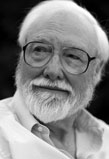





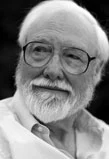



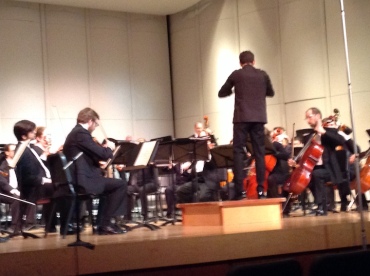
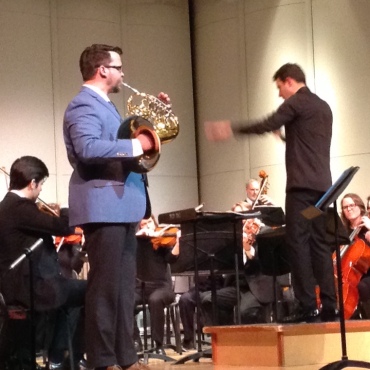
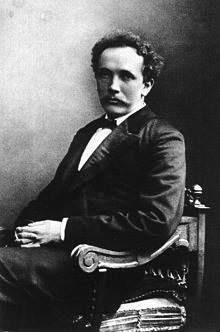
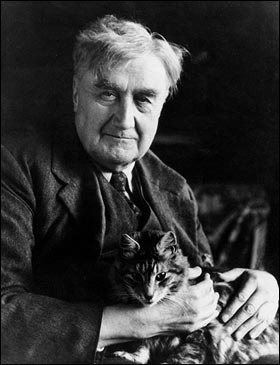
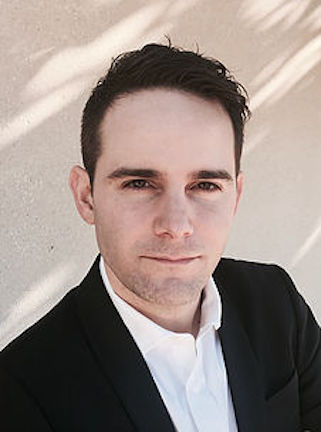





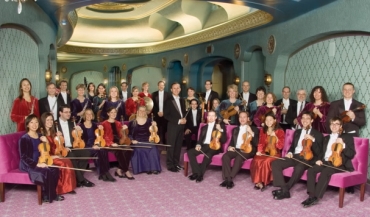









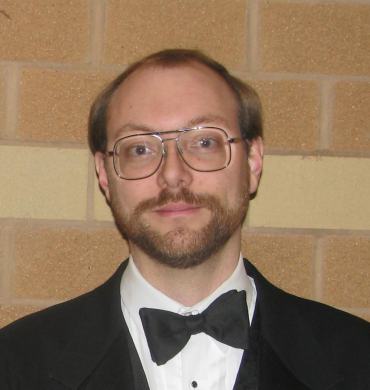












Classical music: The Ancora String Quartet closes out its season with polished, precise and emotionally intense performances of contrasting music by Mendelssohn, Beethoven and Caroline Shaw
Leave a Comment
IF YOU LIKE A CERTAIN BLOG POST, PLEASE SPREAD THE WORD. FORWARD A LINK TO IT OR, SHARE or TAG IT (not just “Like” it) ON FACEBOOK. Performers can use the extra exposure to draw potential audience members to an event.
By Jacob Stockinger
Here is a special posting, a review written by frequent guest critic and writer for this blog, John W. Barker. Barker (below) is an emeritus professor of Medieval history at the University of Wisconsin-Madison. He also is a well-known classical music critic who writes for Isthmus and the American Record Guide, and who hosts an early music show once a month on Sunday morning on WORT-FM 89.9. For years, he served on the Board of Advisors for the Madison Early Music Festival and frequently gives pre-concert lectures in Madison.
By John W. Barker
The Ancora String Quartet (below) is closing its season with a cluster of concerts around the area, including a central one Tuesday night at St. Andrew’s Episcopal Church on Regent Street in Madison.
Of the three works in the program, the centerpiece was the Entr’acte by the American musician and Pulitzer Prize-winning composer Caroline Shaw (below, in a photo by Kait Moreno). It was written in 2011 when Shaw was 29, and has won some acclaim over the years.
It is cast roughly in the traditional form of a minuet and trio, but its point is less any musical substance than the invention of new and utterly eccentric ways of string playing for ear-catching sound effects. Many of those effects are, to be sure, intriguing.
Surrounding this was a pair of quartets seemingly very distinct from each other but related.
The first published quartet, in A major, Op. 13, by Felix Mendelssohn (below), was written in the wake of a romantic song he wrote and whose motives he then used in the quartet.
Emotional suggestions aside, however, it is notable as a darker and more intense work than his subsequent ones in this form. It was composed in 1827, when Mendelssohn was 18, but also the year in which Beethoven died. And it is the shadow of Beethoven, and of Beethoven’s innovations in his later quartets, that hangs over the Mendelssohn work.
Clearly the young master was trying to see how he could absorb the older master’s progressive style into his own still emerging one. I think he found in the process that the two could not be reconciled, and so his subsequent quartets were to be in a less stressful vein.
Against that 1827 work, we were then offered a composition from Beethoven’s own earlier years when he was 29 or 30. This was the final quartet in the set of six published as his Op. 18.
This Op. 18, No. 6, by Beethoven (below) in B-flat major — the program had it mistakenly in G major — is a Janus-faced work, its first two movements still rooted in the late 18th-century background, but with a scherzo full of quirks and tricks that point to the future, and a finale that plays on emotional contrasts.
Its opening Malinconia – or melancholic – music is contested by music of rousing joy, somewhat prefiguring Beethoven’s absorption with recovering his health in the Heiliger Dankgesang (Sacred Hymn of Thanksgiving) of his late string quartet, Op. 132. (You can hear the two contrasting moods and themes in the last movement, played by the Alban Berg Quartet, in the YouTube video at the bottom.)
For all three of these scores, a quartet member gave some introductory comments. (Below, first violinist Wes Luke introduces the work by Caroline Shaw.)
Members of the Ancora String Quartet are violinists Wes Luke and Robin Rynan, violist Marika Fischer Hoyt and cellist Benjamin Whitcomb. As a group, the Ancora players displayed intensity and absorption as well as polished precision, in a program of contrasts.
Share this:
Tags: #AlbanBerg, #AlbanBergQuartet, #AmericanPatriotism, #AmericanRecordGuide, #AncoraStringQuartet, #BenjaminWhitcomb, #BlogPost, #BlogPosting, #CarolineShaw, #ChamberMusic, #ChristianChurch, #ClassicalStyle, #CriticalAcclaim, #EmeritusProfessor, #EpiscopalChurch, #FacebookPost, #FacebookPosting, #FelixMendelssohn, #IsthmusNewspaper, #JohnW.Barker, #LudwigVanBeethoven, #MadisonEarlyMusicFestival, #MarikaFischerHoyt, #MedievalHistory, #MeToomovement, #MusicalSubstance, #MusicCritic, #MusicReview, #MusicScore, #PulitzerPrize, #RadioHost, #RadioShow, #RobinRyan, #SacredHymnofThanksgiving, #SoundEffects, #St.Andrew'sEpiscopalChurch, #StringPlaying, #StringQuartet, #SundayMorning, #UniversityofWisconsin-Madison, #WesLuke, #WORT-FM89.9, #YouTubevideo, absorption, acclaim, Alban Berg, Alban Berg Quartet, American, American Record Guide, Ancora String Quartet, Arts, audience, background, Beethoven, Benjamin Whitcomb, blog, Caroline Shaw, catching, cellist, Cello, centerpiece, Chamber music, Christian, Christianity, church, Classical music, classicalmusic, comments, composer, Concert, contrast, critic, dark, darker, death, ear, ear-catching, Early music, eccentric, emeritus professor, emotional, Episcopalian, Facebook, Felix Mendelssohn, final, form, forward, group, Health, History, hymn, innovation, intense, intriguing, introduce, introductory, invention, Isthmus, Jacob Stockinger, Janus, John W. Barker, last, lecture, like, link, Ludwig van Beethoven, Madison, Madison Early Music Festival, Madison Symphony Orchestra, Marika Fischer Hoyt, Master, Medieval, Medieval history, melancholy, member, minuet, motives, movement, Music, new, performer, precision, process, program, progressive, Pulitzer Prize, quirk, Radio, recovering, review, Robin Ryan, Romantic, sacred, Scherzo, score, Season, shadow, share, show, song, sound effects, St. Andrew's Episcopal Church, stress, stressful, string playing, String quartet, style, substance, suggestions, Sunday morning, tag, Thanksgiving, tradition, traditional, trick, trio, United States, University of Wisconsin-Madison School of Music, University of Wisconsin–Madison, vein, Viola, Violin, violinist, violist, wake, Wes Luke, Wisconsin, Wisconsin Chamber Orchestra, works, WORT-FM 89.9, written, year, YouTube